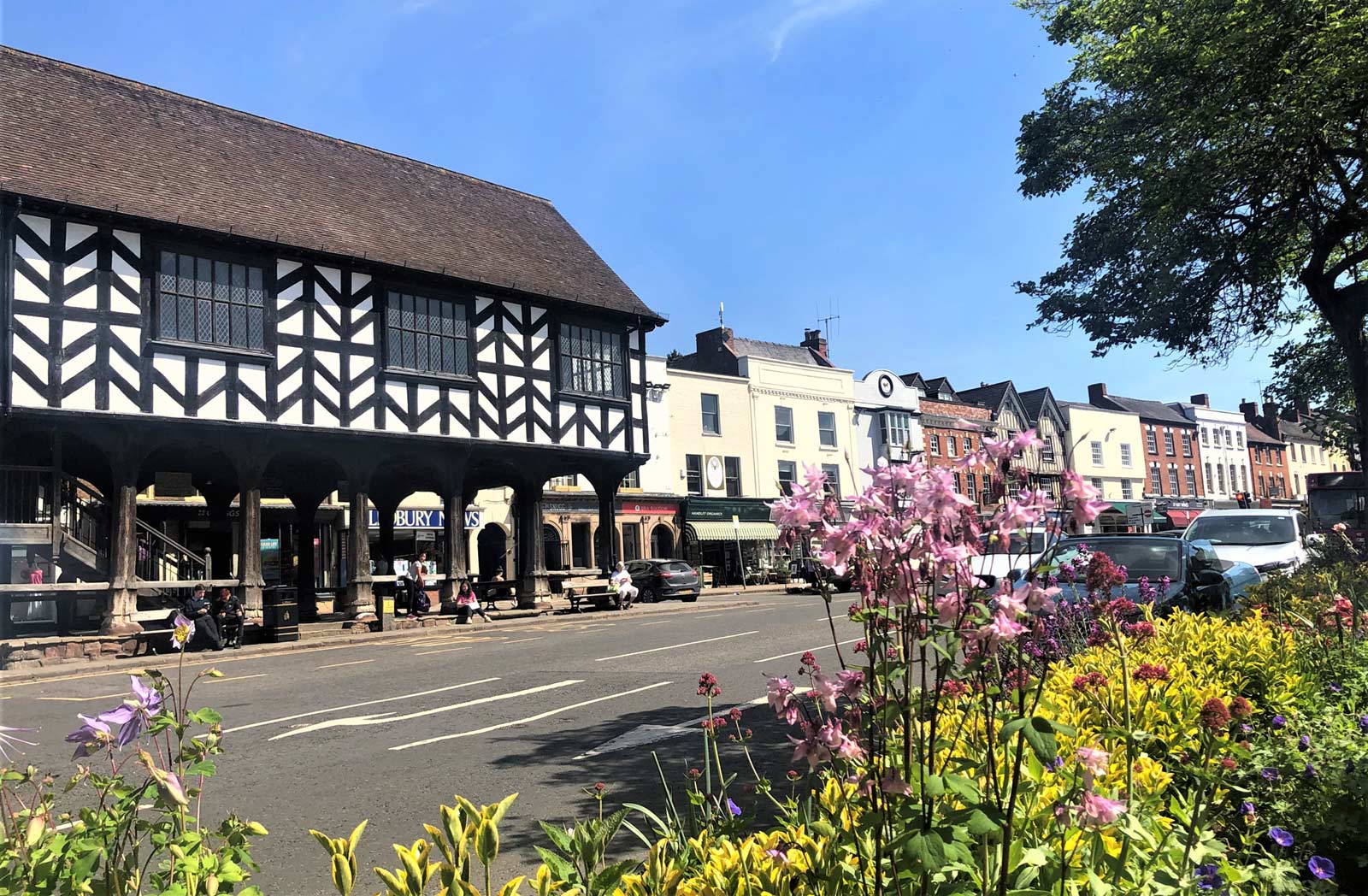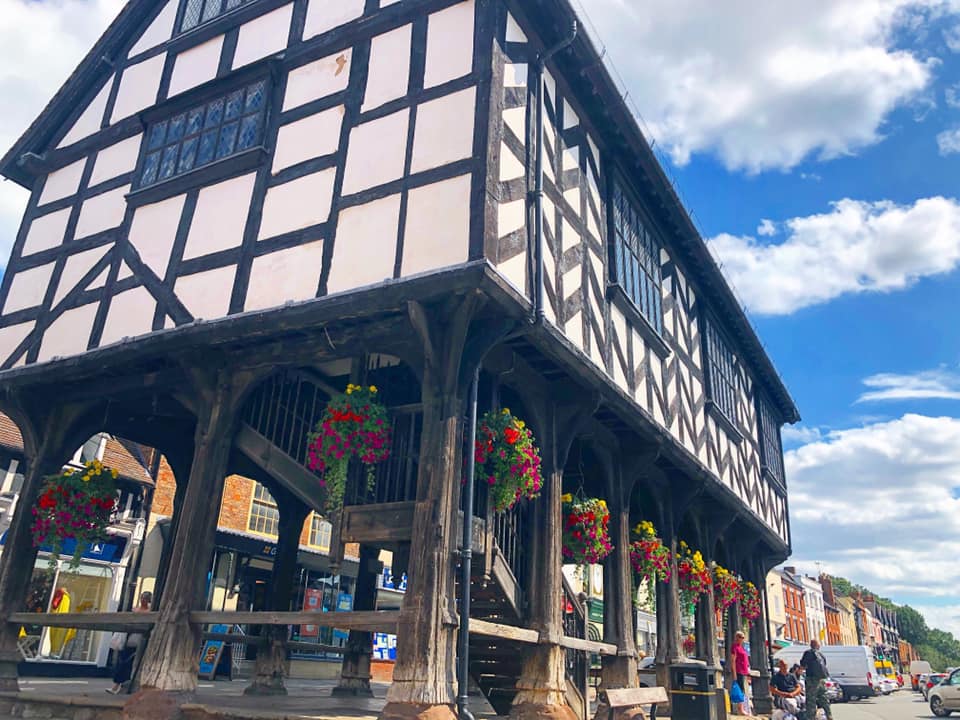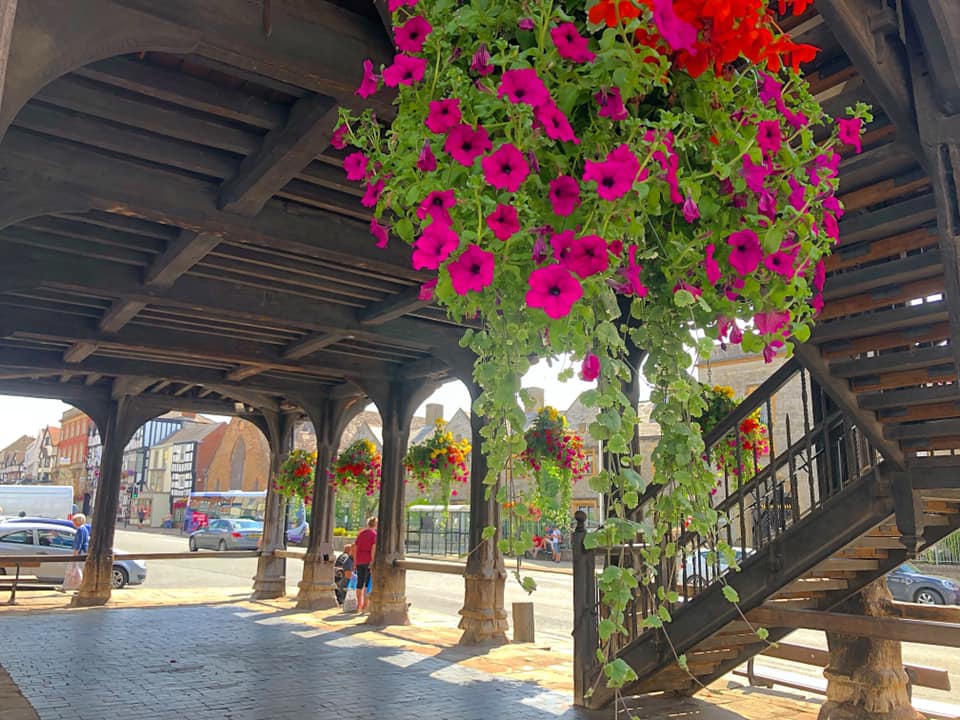Ledbury Market House
The Market House was not built until many centuries after the Market Place was established in 1122. By the late 16th Century the Market Place had been encroached upon by two ramshackle rows of shops. John Phillips, a trader in the town, proposed that they should build a Market House where one of the rows of shops was standing. He collected public subscriptions, bought the Shoppe Row for about £40.00 and had it demolished.
Work started on the Market House in 1617 and the available records suggest that it was to be a two storey building, raised on sixteen pillars and having a timber frame with a brick infill, with a number of small shops constructed below, in between the stilts. Market buildings like this were common, but the upper rooms were more often used for the transaction of business or as a town hall.
Popular local belief is that it was designed by architect John Abel, Carpenter to King Charles 1. There is little evidence to support the theory, as the building lacks the ornate carving characteristic of his work, although he was a local man and responsible for some of the Market Halls in other towns in Herefordshire. It did take many years to complete, so we can speculate that the design may have been changed over time. John Phillips died in 1655 with the Market House still unfinished and no money left.

The trustees running the project after his death eventually completed the building in 1668, by taking a sum of £40.00 from two legacies that had been left for the provision of clothes for poor people! They got away with this misappropriation by writing into the deeds of the Market House that clothing for twelve poor people a year would be paid for from the profits of the Market House.
Construction Work on Ledbury Market House
The evidence suggests that the upper rooms were variously used, not only for the storage of corn, but for wool, hops and acorns (used in the tanning process). There has been a long running dispute as to whether the stilts were constructed of Oak or Spanish Chestnut, which was eventually decided in the 1980’s when one of the supports had to be partially replaced. Analysis of the removed timber proved that they are made of Oak. Earlier major work was carried out in the Victorian period when a change of use to a town hall and meeting room was proposed. Much of what the visitor sees today dates from that time, when the present windows, staircase, floor and staging were put in.
Other, more sympathetic, restoration works were carried out in 1939, the 1970’s and the 1980’s, but the most recent were in 2006, when it was discovered that there was something seriously wrong with the stilts. The wood had become infested with insects, notably boring wasps, with additional decay due to rot. Modern technology has made it possible to strengthen the stilts while maintaining the 17th Century structural framework of the building. The town looked on in amazement as the Market House was raised off the ground a full 600mm to allow the builders to scrape out the damaged wood from the insides of the bases and the lower part of the supports. This was replaced with a mixture of lime/grout mortar, a long lasting material which will be strong enough to take the load of the building. It was then carefully lowered back onto its bases.
Today the building is mainly used for meetings, sales and exhibitions, although for a number of years in the late 20th Century it was also used as the registry of Civil Marriage. On market days traders still sell their wares beneath it, regulated by a charter dating from the reign of Queen Elizabeth 1.
Market House
The Market House opening hours are the same as the 16th Century Painted Room.
Tours are by request from the guides at the 16th Century Painted Room in the Town Council Offices and are subject to the availability of the guide(s).

Admission Is Free
Donations are welcome
Coach Parties by prior arrangement only.
Out of hours visits and Coach Parties may be subject to a modest cover charge.
For more information:
Please contact tourguides@ledburytowncouncil.gov.uk or telephone 01531 632306.
